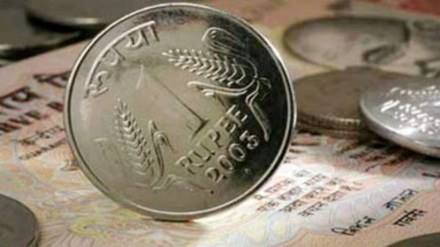The rupee hit another all-time low of Rs 84.282 against the dollar on Wednesday after the dollar index hit a four-month high. With Republican candidate Donald Trump acing the US presidential race, it is expected that his inflationary policies will lead to further strengthening of the greenback.
The rupee registered a fall of 17 paise in a single day, making it the highest fall in four months. According to the Clearing Corporation of India data, it hit intra-day low of Rs 84.33 and closed at Rs 84.295 a dollar.
According to forex dealers, the rupee may see further decline in the coming days and inch up to Rs 84.40.
Despite touching all-time low levels, the domestic currency has fallen the least in comparison to other Asian peers. The Reserve Bank of India has been intervening in the market, which limited the fall in rupee as compared to other emerging market currencies.
At the same time, the US 10-year yields surged 17 basis points to a four-month high of 4.44%.
“As Trump is prone to imposing anti-dumping duty and other tariffs, inflation may rebound, which may slow down the rate-cut cycle. This may lead to a rise in yields and the dollar index, impacting the rupee directly. With this pressure, we see depreciation in the rupee going forward,” said Jigar Pandit, senior vice president-business head, commodity and currency at Sharekhan.
In the coming days, the RBI is expected to intervene in the market, but not aggressively, as it would hurt the export competitiveness. With expectations of further depreciation in the rupee, panic has run down amongst importers, leading to a massive sell-off in the market.
“It is good thing that they (RBI) are allowing this depreciation. More intervention would require spending of forex reserves, which is not prudent. There is no point in fighting a move that is impacting all emerging market currencies. Right now, their aim is to reduce the volatility, not influence the direction,” said Gaura Sengupta, chief economist at IDFC First Bank.
Trump’s administration is popularly known for its expansionary policies, which could widen the fiscal deficit, potentially leading to higher government borrowings. This may lead to an uptick in US Treasury yields. Rising yields, in turn, would bolster the demand for dollar-denominated assets, driving demand for greenback.
Market participants indicated that if the trend continues, emerging markets could face a challenging landscape as the dollar’s strength places additional strain on global currencies and shifts investor sentiment toward safer, dollar-backed assets. Going forward, the market will assess the trend of whether foreign institutional investors are likely to continue selling from the domestic equity market.
